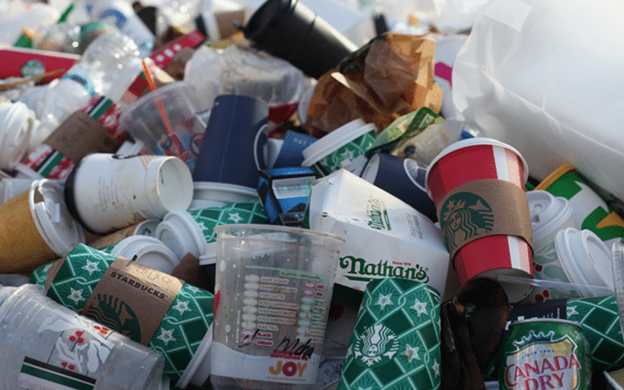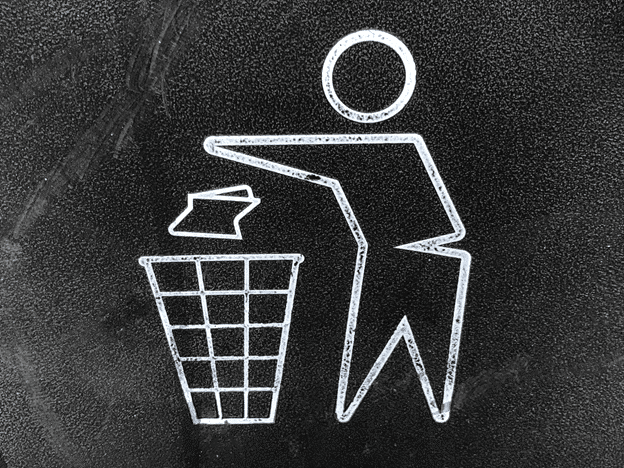Battling Against Recycling Contamination

While the increasing dedication and a growing rate of participation of the general public in recycling is good news, residents put everything they believe could or should be recycled in the designated containers.
It’s important to understand that the slightest bits of non-recyclables in a load of recycling could prevent the entire load from being recycled. In other words, if you’re not recycling right, you could be preventing tons of items from ever seeing a second life.
Learn about this global challenge and join in the battle against recycling contamination. Titan National has a complete recycling solution.
The Challenge
Back in early years, many of us became accustomed to a different type of recycling program than what we have today. People used to separate items with care every week so that paper, plastics, and aluminum were processed into different material streams. No non-recyclables would make their way into them.
With the introduction of single-stream containers in the early 2000s, businesses and residents could simply put all recyclables in a single bin, which would then be sent to a sorting facility to separate the items. This made it remarkably convenient for households, so participation and recycling rates soared to peak levels. Recycling entered its boom years as the world began to recycle millions of tons more for the benefit of environment and communities.
However, the complexity of products and packaging simultaneously increased, altering people’s understanding of what’s recyclable and what’s not. Simply compare the plastic bottles of today with those used 15 years ago. They are a lot lighter and thinner than they used to be. The packaging of products that we buy today is now made up of a wide variety of plastics.
Thus, items like rubber hoses, plastic bags, low-grade plastics, wires, and organic matter such as liquid, food, and yard waste are finding their way into single-stream containers. As a result, the proportion of trash mixed with recyclables, or the contamination rate has gradually increased over the past couple of decades. It’s no wonder that 1 in 4 items put in a recycling container today are not recyclable. Indicating an average contamination rate among businesses and communities of 25%, seriously disturbing the recycling economy.
One of the most daunting issues faced by the recycling economy is that contamination greatly increases the cost of recycling. To make things worse, the recyclables derived from light and more complex plastics are being sold for considerably less. The higher complexity and cost to process these items, coupled with fallen commodity prices, has put the financial sustainability of recycling at a tremendous risk.
Moreover, recycling contamination directly affects the quality of recyclables that later enter the commodity markets. For instance, when high-quality cardboard and paper encounter any liquids or foods placed in the recycling container, they become saturated and considerably lose their quality. Tons and tons of cardboard and paper lose their recyclability this way, ending up in trash.
All this is happening at a massive scale. And remember, there are a lot more contaminants than liquids and foods. The quality of recyclables going into the commodity markets is greatly impacted by any trash that goes in recycling streams. The greater the recycling contamination, the lesser can be recycled. That’s the global challenge we’re faced with.
Now that you have a clear idea about the problem, read on to learn what role you can play in the battle against recycling contamination.
How You Can Help Reduce Recycling Contamination

Think Twice Before Placing Items in the Recycle Cart
Make sure that the items are tossed in the correct recycling stream. If you are unsure about what’s recyclable and what’s not, visit Ecomaine’s Recyclopedia and enter the item in the search bar.
It won’t just tell you whether the item is recyclable or trash, but it also explains what you should do about it. For instance, if you enter ‘banana peel’ in the search bar, it tells you to compost it in your garden, along with resources to guide you on the process.
Place All the Recycling Streams or Containers Together
Place All the Recycling Streams or Containers Together
When containers for different item types are spread out across a facility, it becomes difficult for people to find the container they’re looking for, prompting them to toss the item in the closest bin. Placing the bins for recycling, trash, and other streams beside each other should significantly reduce recycling contamination.
To further simplify the choice for consumers and make handling easy for your staff, choose a bin with multiple streams. Many companies now offer these.
Have Restrictive Openings on Recycle Containers
Have Restrictive Openings on Recycle Containers
Sometimes, even when containers for recyclables and trash are placed together, people accidentally throw items in the wrong stream. One great strategy to minimize that is to have restrictive openings on bins to further clarify to people where they should toss the items.
We recommend a thin and rectangular opening for paper items, small and circular opening for beverage containers, and large square opening for trash containers.
Keep Your Recycling Containers Clean
Keep Your Recycling Containers Clean
Finally, you can also contribute to reduce recycling contamination by cleaning the recycling containers. This doesn’t have to be a deep, thorough cleaning of every container. Just empty and rinse your containers of all potential contaminants such as liquids, scrap pieces of food, oil, or grease. This simple practice can incredibly reduce the chances of contamination.
Closing Thoughts
To sum it up, recycling contamination is a strain to our environment because it kills the purpose of recycling. Any trash that enters the recycling streams diminish the recyclability of recyclables, turning them into trash. This only aggravates the environmental hazard arising from waste. Moreover, when recyclables become trash or lose their quality, the overall commodity market for them is adversely affected.
Following the above-discussed tips should help you battle against recycling contamination. If you’re looking for effective waste management solutions, get in touch with Titan National. We are here to address all your waste management needs.
You also want to consider who you use for dumpster rental. Work with a safe and reputable dumpster rental provider be sure your waste is properly handled. Call Titan National Dumpster Rental.